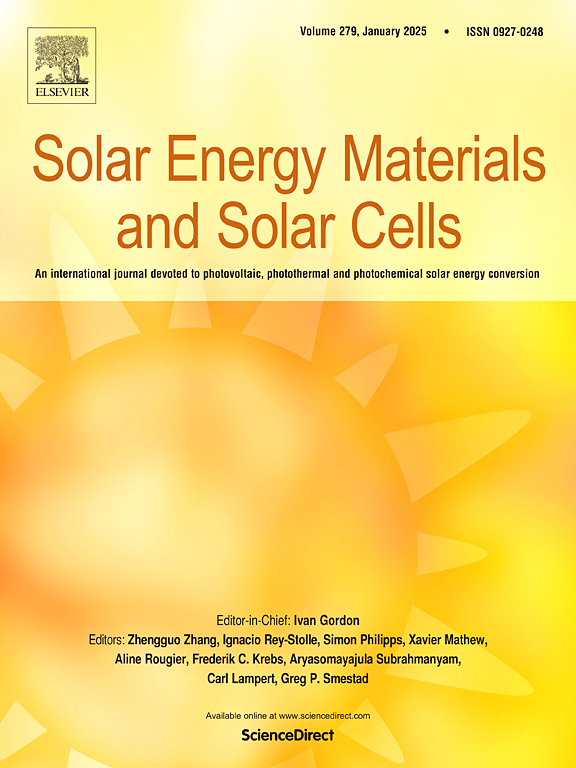一种用于大面积(bbb1cm2)机械堆叠两端串联钙钛矿/硅异质结的整体方法,效率高于30%
IF 6.3
2区 材料科学
Q2 ENERGY & FUELS
引用次数: 0
摘要
在生产四端和双端钙钛矿/硅串联太阳能电池的各种架构中,双端(2T)机械堆叠串联配置结合了钙钛矿和硅亚电池独立制造和优化的简单性,以及与2T架构相关的系统复杂性降低。为了提高2T机械堆叠串联的性能,需要解决几个材料和制造方面的问题,并以协同的方式结合起来。从能隙可调性、钙钛矿厚度和成分、缺陷钝化和器件结构等方面全面改进光伏性能。该技术允许提高可实现的功率转换效率,在最佳情况下达到31%(稳定30%,平均28.32%),有效面积大于1平方厘米。本文章由计算机程序翻译,如有差异,请以英文原文为准。

A holistic approach for a large area (>1 cm2) mechanically stacked two terminal tandem perovskite/silicon heterojunction with efficiencies above 30 %
Among the various architectures proposed to produce both four-terminal and two-terminal Perovskite/silicon tandem solar cells, the two-terminal (2T) mechanically stacked tandem configuration combines the simplicity of an independent fabrication and optimization of perovskite and silicon sub cells with a reduced system complexity associated with the 2T architecture.
To improve the performance of the 2T mechanically stacked tandem several material and fabrication aspects need to be addressed and combined in a synergetic way. A holistic approach able to improve the photovoltaic performance working on the energy gap tunability, the perovskite thickness and composition, the defect passivation and the device architecture is demonstrated. This technique allows to raise the achievable Power Conversion Efficiency reaching in the best case 31 % (30 % stabilized and 28.32 % on average) on active areas larger than 1 cm2.
求助全文
通过发布文献求助,成功后即可免费获取论文全文。
去求助
来源期刊

Solar Energy Materials and Solar Cells
工程技术-材料科学:综合
CiteScore
12.60
自引率
11.60%
发文量
513
审稿时长
47 days
期刊介绍:
Solar Energy Materials & Solar Cells is intended as a vehicle for the dissemination of research results on materials science and technology related to photovoltaic, photothermal and photoelectrochemical solar energy conversion. Materials science is taken in the broadest possible sense and encompasses physics, chemistry, optics, materials fabrication and analysis for all types of materials.
 求助内容:
求助内容: 应助结果提醒方式:
应助结果提醒方式:


